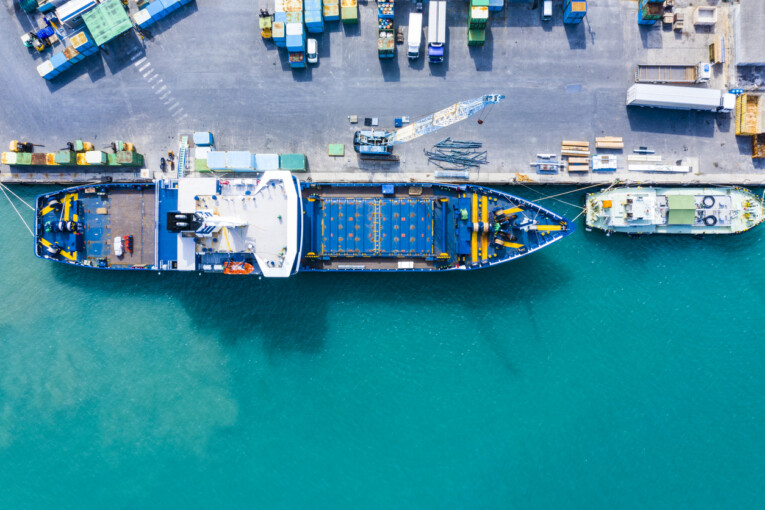Top 6 Ways to Alleviate Port Anxiety
Manufacturing companies and suppliers employ various strategies to improve operations and lower costs. However, this is not without challenges. The supply chain is prone to disruptions and congestion, leading to delays. This can cause port anxiety.
Port anxiety is a common feeling among supply chain professionals associated with stress, worry, fear, and panic caused by adverse events in their working environments. A little worry is good, but too much worry can mess up your day!
Common Causes of Port Anxiety
Disruptions in the supply chain are a major cause of stress and anxiety among manufacturers and suppliers. Although some of the stressors are inevitable, there are various logistical solutions to handle port anxiety to ensure smoother processes. The common causes of interruptions and delays in the supply chain include:
Environmental Factors
Natural or environmental factors are significant causes of supply chain disruptions. Some cause considerable damage to goods in transit and are difficult to troubleshoot.
Some production processes cause massive pollution and climatic changes in the long term. Climate changes affect supply chain patterns, especially where agricultural products are involved. Suppliers, manufacturers, and shippers should study climatic trends to plan their activities effectively. Doing so avoids unprecedented events in their supply chains that can trigger port anxiety.
Changes in Governmental Regulations
Governmental restrictions are a common challenge among manufacturing and supply companies. The regulations vary among states and change with time.
As the global manufacturing networks enter new markets, trade restrictions and taxation, border controls, and labor laws are a major concern. Therefore, planners should consider these critical elements when designing production and supply techniques to avoid port anxiety when things fail to go as expected in their supply chain.
Cost Fluctuation in Transport
Transport disruptions affect the supply chain in many ways. For example, they occur during fuel crises, port complications, and route inefficiency. However, companies can resolve this with detailed metrics and analytics to furnish teams with updated information. Such tools improve decision-making and ensure the smooth movement of goods with minimal delays.
Lack of Technological Tools to Respond to Prevailing Trends
Manufacturing companies and supplies should adopt modern technology for intelligent planning. The use of planning software solutions, the Internet of Things, and other advanced technologies enhance planning and decision-making.
However, the lack of adequate technological solutions, planning tools, or networks can trigger port anxiety as the team is worried about not meeting company objectives.
Inaccurate Planning
Lack of proper planning is arguably the leading cause of disruptions and delays in the supply chain. The lack of functional tools and skilled teams can lead to poor forecasting and improper planning. This can affect a company, yard, and transport management, leading to delays and losses. The uncertain events can trigger port anxiety.
Pandemics
Pandemics can have significant effects on port operations and supply chains. For instance, the COVID-19 pandemic affected many global companies and normal operations at all stages of production and supply. This led to widespread port anxiety among many employees and officials due to the massive uncertainty associated with the pandemic.
Cyber Attacks
Most companies have adopted technology to improve operations and efficiency. However, your supply chain is prone to cyber-attacks if you lack proper security protocols such as denial-of-service, password attacks, cross-site scripting and malware attacks. This can compromise your data distorting the entire supply chain. Such an occurrence can trigger port anxiety among the employees.
How to Minimize Supply Chain Disruptions and Alleviate Port Anxiety
Build Inventory
Disruptions in manufacturing can cause shortages, affecting the supply chain. Stocking essential goods can save you a lot of stress during interruptions. Companies should keep surplus stocks of finished goods and raw materials to sustain the business during supply disturbances.
Conduct Vulnerability Audits
Perform risk analysis to determine weak points in your supply chain. This way, you will develop alternative solutions to avert any disruptions and shortages. Moreover, assess potential political and environmental issues impacting your supply chain. So doing eases all fears you might have of possible failures.
Have a Backup Plan
Collaborate with other suppliers in your niche. Think about what they can provide if your supplier can not deliver goods to you. This works best when you identify supplies in different geographical areas. Build strong business relationships; this will pay off when you need them most and avoid the risk of port anxiety among your team.
Work with a Logistics Expert
A fulfillment expert helps pinpoint any issues in your supply chain; they will guide you on the best measures to avert disruptions. A logistics expert comes in handy during manufacturing and supply disruptions. They assist your company in locating other transportation solutions and navigating troubles and the associated fees.
Invest in Risk Evaluation Tools
Invest in technological tools to help evaluate potential threats in your supply chain. For example, use AI-enabled environmental analysis software and apps to gauge potential hazards in the supply chain. Moreover, take advantage of social media; it is a predictive tool to inform you of anticipated shortages.
Plan for Disruptions Using Simulation Engines
Planning helps handle risks in the supply chain. Use system-based simulation engines to plan and handle extreme, disruptive situations. This minimizes most supply chain risks and improves data quality and real-time planning. Advanced simulation engines are helpful in case of prolonged crises.
Supply Chain Technologies and Solutions to Deliver Competitive Advantage
Manufacturing companies must employ leading technologies to adapt to changes and disruptions in the supply chain. Examples of leading technologies that can overhaul supply chain operations and avert disruptions to avoid port anxiety include:
Internet of Things (IoT)
Suppliers can use AI analytics to track locations, weather conditions, traffic patterns, and environmental conditions. This way, shippers can reroute deliveries to avoid delays.
Artificial Intelligence and Machine Learning Benefits
Companies can leverage different technological tools such as AI, machine learning, and predictive analytics to collect and analyze data. This helps company and port officials to make informed decisions on company and port operations to avoid port anxiety linked with various adverse events. Data analysis helps port officials to predict various situations and take necessary steps to avert adverse events.
Robots and Automation
Robots have been used for a long time in the supply chain. But AI technologies can push them to enhanced levels by assigning machines multiple manual tasks during picking, packing, and loading heavy goods. This helps improve precision, mobility, and safety, preventing port anxiety among employees.
Get Help From Symbia Logistics
Having the right technological solutions is critical in manufacturing and supply processes. Disruptions in the supply chain can pose potential threats. Symbia Logistics can ease port anxiety through the proficient services it offers. We are experts in warehousing, fulfillment, and distribution solutions.
Contact us to learn about our logistics solutions and stay in control of your manufacturing and supply processes.







